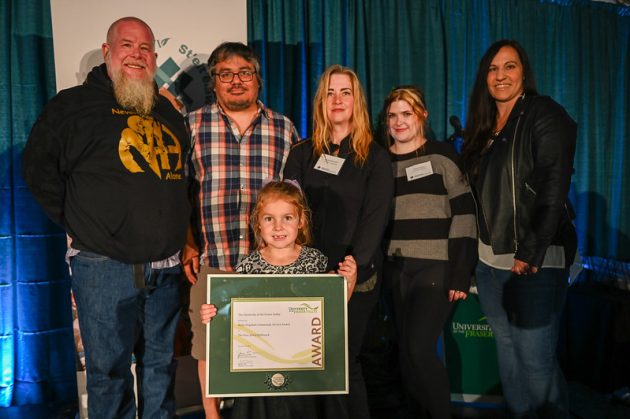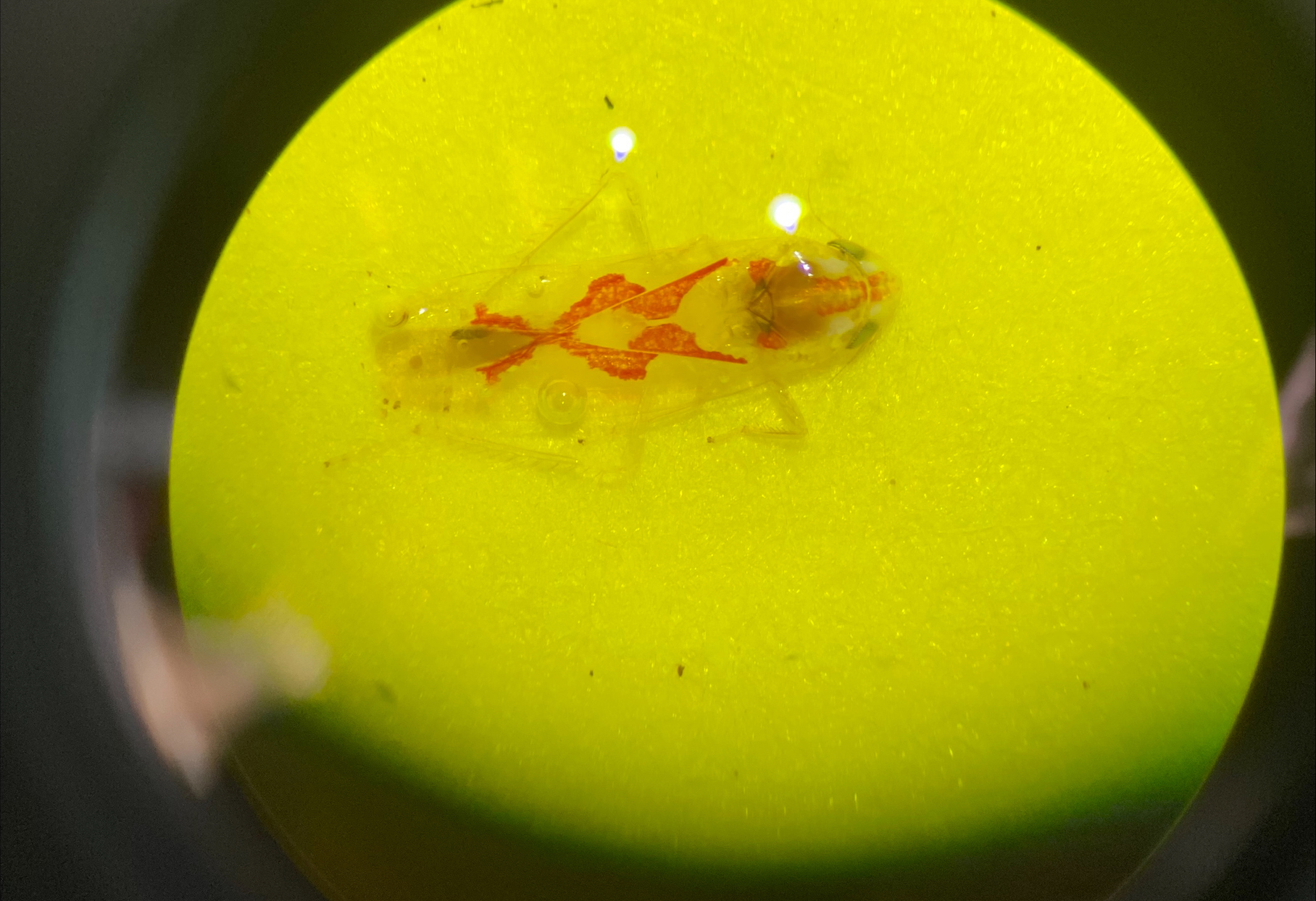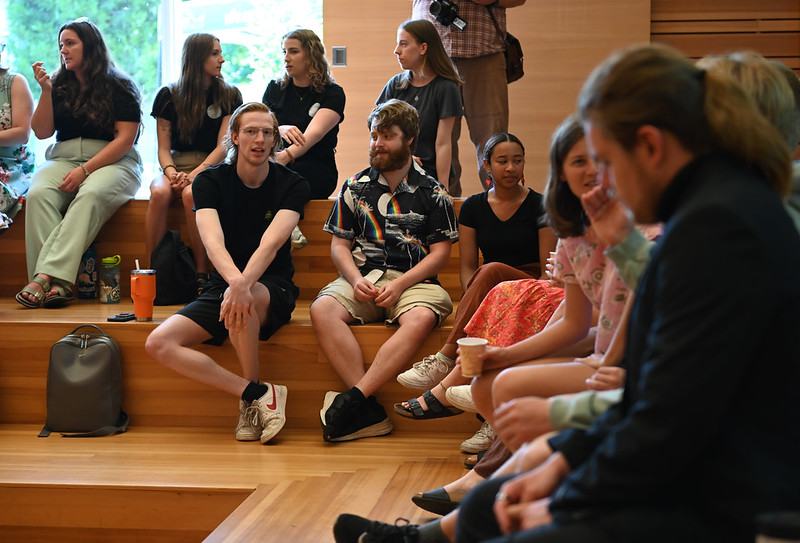UFV earth scientist researches ice age oasis on Haida Gwaii
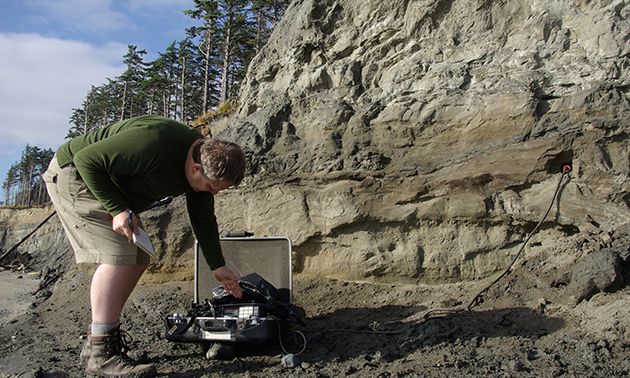
For Dr. Olav Lian and his team of student researchers it’s all about the details.
Teeny, tiny, miniscule details — grains of sand in this case — that lead to big discoveries.
Lian is an earth scientist in UFV’s Geography and the Environment department, and he and his student researchers have helped make a giant contribution to research on the geological and biological history of Haida Gwaii.
Working in partnership with researchers at Simon Fraser University, Lian and his team used a process called optical dating to measure the age of an ancient river bed buried directly beneath a layer of peat exposed in the sea cliffs at Cape Ball on the islands known as Canada’s Galapagos.
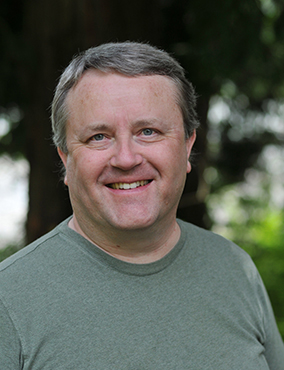
Lian’s team determined the ancient river bed is about 57,000 years old and may have been an oasis during the second to last great ice age.
His research partner from SFU, Dr. Rolf Mathewes, hypothesized that parts of Haida Gwaii were free of ice while the rest of Canada was buried under thick sheets. The region around the ancient river bed in question may have provided refuge for plants and animals including bison, caribou, and perhaps even the massive woolly mammoth.
But Mathewes needed Lian’s optical dating technique to determine the exact age of organic deposits in the area to test his theory.
“It was too old to date using radiocarbon, which can only go back around 50,000 years,” said Lian. “The techniques used in our UFV Luminescence Dating Laboratory can go back much further, up to half a million years in some cases. The peaty material we identified represents an ancient wetland which doesn’t form if the land is covered by ice.”
Lian and his UFV team isolated small grains of feldspar mineral from sand samples collected from the site. They performed experiments to determine the time that has passed since the grains’ last exposure to sunlight.
“As the grains moved downstream in the ancient river, they were exposed to sunlight, which reset their ‘electron clocks’. Once they became covered by subsequent layers of sediment, their electron clocks start ticking again.”
At the UFV lab, the grains are mounted onto the surfaces of tiny aluminum disks, which are then placed on a carousel within a specialized instrument. A beam of infrared light is then shone on the feldspar mineral grains, which ‘jiggles’ electrons out of their atomic traps. The freed electrons promptly find themselves at another kind of atomic site in the feldspar grains where excess energy is given off as light of a different colour: violet. It is this light which is the luminescence that is measured.
“Put simply, the brighter the measured luminescence, the more time has passed since the feldspar grains were last exposed to sunlight, and the older the landform, a river bed in this case, from which it was collected,” notes Lian.
The team’s dating of the site at about 57,000 years, combined with Mathewes’ discovery of ancient pollen and spores in the peat layers, led them to conclude the site had been treeless during the time of this ice age. Of particular interest is that many of the spores collected could only have grown on the dung of large grazing mammals. This led Mathewes to conclude the peat bed could have formed in a watering hole where bison, caribou, and possibly woolly mammoths gathered.
“It seems that this was a tundra-like area that supported grasses and sedges, like what you would expect to find near a glaciated area, but not one covered by ice itself,” Lian says.
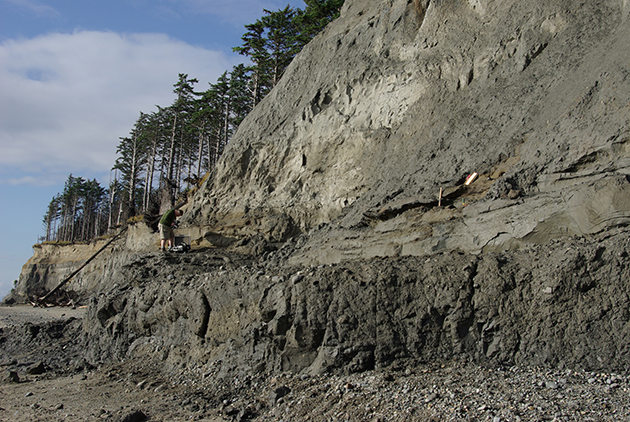
Lian and Mathewes’ connection goes back nearly 30 years to when Lian was a research assistant working with Dr. David Huntley, the SFU physicist who, in 1985, invented the optical dating technique that Lian now uses. When Huntley retired in 2005 he donated much of his laboratory equipment to Lian to help him establish the UFV Luminescence Dating Laboratory. UFV now has the only such laboratory in Western Canada.
Lian and colleague Dr. Richard Roberts, who directs in a similar laboratory in Australia, paid tribute to their mentor Huntley by marking the 30th anniversary of the invention of optical dating in an article (Illuminating the Past) published in April 2015 in the prestigious science journal Nature.
This recent collaboration between Mathewes and Lian led to a publication in the Canadian Journal of Earth Sciences. The article is titled Early Wisconsinan (MIS 4) glaciation on Haida Gwaii, British Columbia, and implications for biological refugia. It was selected as an Editor’s Choice article, which means it was deemed to be of particularly high caliber and topical importance. It is available on the National Research Council Research Press website.
The research also appeared on the front page of the Oct 6, 2015 issue of The Vancouver Sun, and was featured on the Global TV’s News Hour on Oct 9, 2015.
UFV students Justine Riches (née Cullen), Rachel Chapman, Dan Huesken, and Brie Mackovic (all of whom have since graduated, and three of whom are now graduate students) worked with Lian on this project.
Lian was the 2012 winner of the UFV Research Excellence award.



